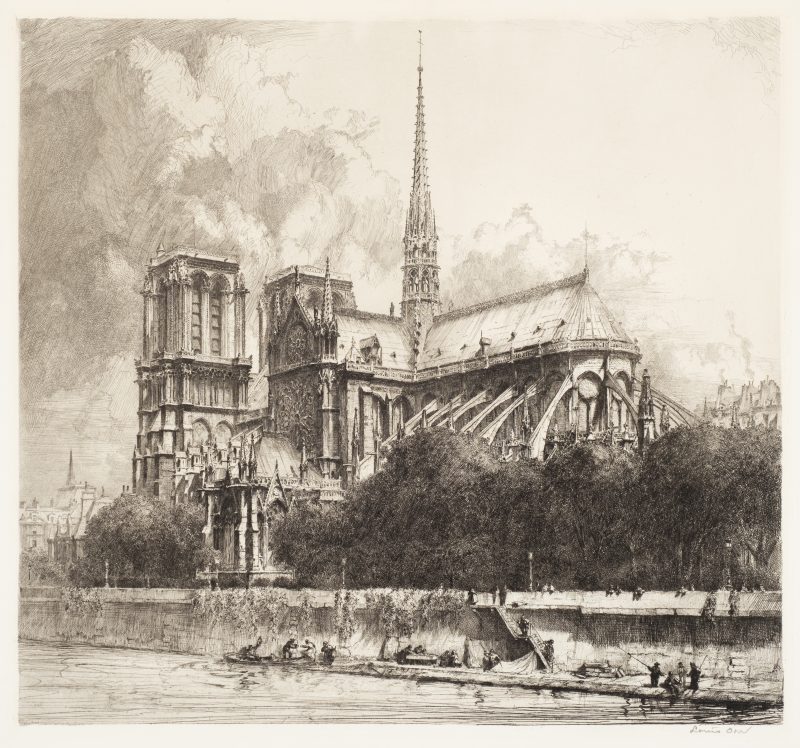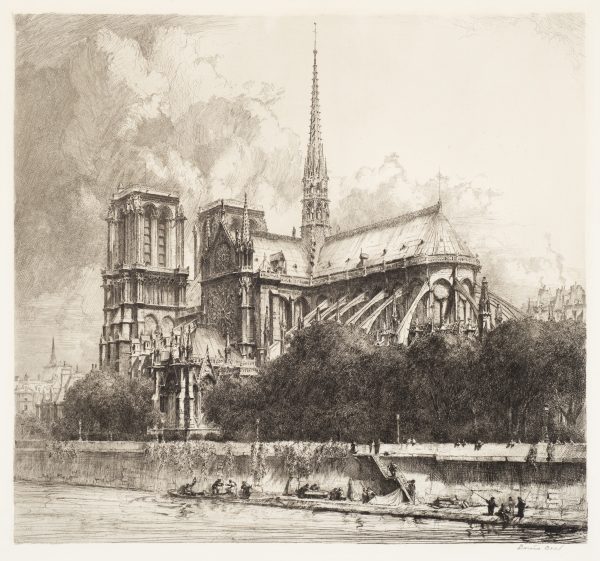
Notre-Dame and Beyond: Prints and Watercolors of Churches and Cathedrals from the Collection
February 28 - July 5, 2020
Kurdian Gallery
About This Exhibition
During the 19th and early 20th centuries, medieval Gothic architecture—originally built more than 500 years before—was suddenly popular again. Architects, engineers, and designers used these structural marvels as prototypes for modern skyscrapers. Political radicals and reformers saw cathedrals as emblems of local government and community. Monarchists and political conservatives viewed them as symbols of the traditional, religious past they longed to regain. Whatever the politics, whatever the country, everyone loved cathedrals.
As Gothic fever swept Europe and America, artists increasingly looked to these centuries-old monuments for inspiration. From luminous watercolors to exacting architectural renderings, Notre-Dame and Beyond features elegant works on paper that chronicle the shifting understanding and relevance of these iconic buildings. Their continued importance, even in 2020, was recently highlighted by the outpouring of emotion that occurred after last spring’s fire at Paris’ Notre-Dame Cathedral.

Louis Orr, Notre-Dame de Paris, 1924. Etching, 14 7/8 x 16 inches. Wichita Art Museum, C. A. Seward Memorial Collection